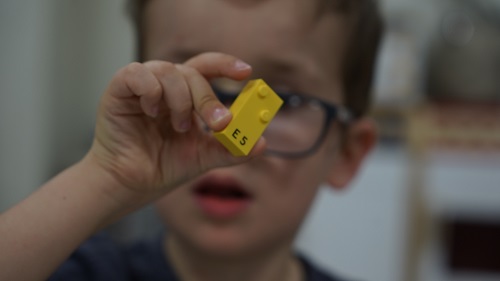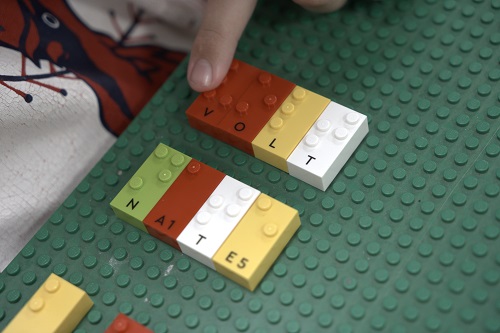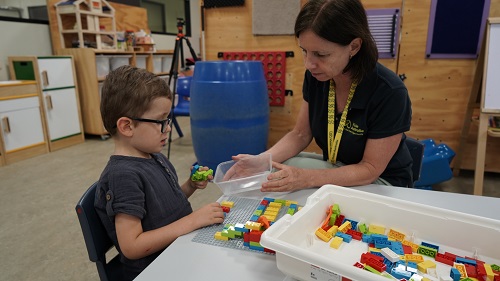By Ron Hooton, Vision Australia CEO
Vision Australia recently partnered with the LEGO® Foundation to bring LEGO ® Braille Bricks to Australia.
The idea is that the bricks, which have braille on them as well as a raised letter that corresponds to the braille alphabet, can be used for inclusive education
It can be tempting to think advances in technology mean that braille is becoming outdated, a bit like in-person meetings or going to the office.
Technologies like text to speech are great tools for receiving information, but they don’t teach spelling, sentence structure or any other grammar or literacy skills.
Braille helps people who are blind or have low vision to communicate with others and to access information as the sighted community does. The value of this cannot be underestimated.
Braille is a vital lifeline. It represents inclusion, information and hope. It is integral to maximising opportunities for participation by people who are blind or have low vision in all aspects of life.
Given this critical importance of braille, our links with a global brand like LEGO® serve as an example of how government, education institutions, and information content producers can collaborate to promote braille and its importance.
We need a better understanding about how important braille is to the blind and low vision community.

Caption: Braille is vital in supporting people who are blind or have low vision to develop literacy skills.
Why braille is so important
Braille is vital in allowing people who are blind or have low vision to read, to learn and to communicate. And with LEGO® Braille Bricks, it’s now even helping kids who are blind or have low vision to play.
Braille provides opportunities. We know from our research that people who are blind or have low vision are significantly under employed. Just 24% of Australians who are blind or have low vision are in fulltime employment, putting us well behind countries like New Zealand and Canada.
We know that adults who are blind who learn braille are twice as likely to be employed, are more financially self-sufficient, and achieve higher education levels.
Other research has shown that when taught braille at an early age, the literacy levels of blind high school students is comparable with those of their sighted peers, whereas those who received infrequent or no instruction in braille achieved lower literacy levels than their sighted peers.

Caption: Despite advances in technology, braille remains key in allowing people who are blind or have low vision to access information.
Promoting greater access to braille
Vision Australia has long advocated that access to braille is a fundamental right for people who are blind or have low vision.
Along with being able to access material in braille, this also means people who are blind or have low vision are provided with the support and opportunity to develop braille skills.
For children and young people, this means they should be taught to read and write braille with the same level of thoroughness, and by people with equivalent expertise, as their sighted peers are taught print.

Caption: It's vital that people who are blind or have low vision access to braille education.
The wider community needs to continue to think of braille when it comes communicating. Government health messaging, personal correspondence from government departments, key financial information from banks should all be available in braille.
Braille users also have the right read they want to enjoy, what makes them curious and what makes them feel connected.
At Vision Australia, through braille training, our Library service and our Print Access team, we make all of that possible every day.
Now it’s time for the wider community to join us in supporting people who are blind or have low vision to participate in every facet of community life with choice, confidence and independence.










